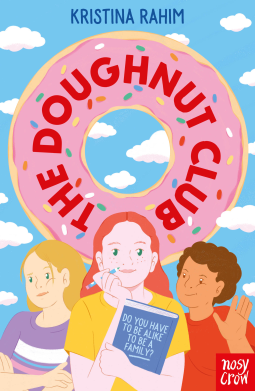The Doughnut Club
- John Bolton
- Feb 18
- 3 min read
Wr. Kristina Rahim
Ill. Marina Tena Borras
Pub. Nosy Crow
Age Range - 8+
Donor conceived Quinn loves her family, but she often feels the odd one out. Not only because she’s the only one with red hair and green eyes, but because she would rather be quietly drawing than surfing or rock-climbing or whatever mad activity her mums and brother Olly might like to do on holiday. But when Quinn’s mums tell her and Olly they have sixteen donor siblings, Quinn is really excited. As she tries to secretly find out more, Quinn starts to lose sight of what really important – especially when she starts to believe her worst enemy could be one of her siblings! Can she find a way back to her family, whilst finding a way to tell them how she really feels?
"...being misunderstood is a theme of the novel, and many of the dramatic twists and turns stem ultimately from people not understanding one another."
I went into this book knowing nothing about it (as I do with most books, tbf). I actually assumed it was about an afterschool club themed around doughnuts. SPOILER: it's not.
Note to self: start an afterschool club themed around doughnuts.
When I learned that the main character (Quinn, age 12) and her brother Olly (10 and a half) were donor-conceived by their two mums, I thought good, a bit of representation! I'm always uplifted when I come across a children's book that goes beyond the most commonly represented narratives and shows more diverse perspectives. It was especially nice that it's the protagonist and not a secondary character (The Boy at the Back of the Class, I'm looking at YOU). But it ran deeper than that: this book is ALL about representation.
The principle antagonist in the story is Monika, a slightly older girl who Quinn sees each time their families go on holiday. That really transported me back to my own family holidays in St Ives. We stayed at the same hotel year after year (it seems in my memory like many, many times, but in reality it was probably only two or three) and my parents would often end up chatting with people they'd met there the previous year. Monika teases Quinn fairly mercilessly, and it only takes a few pages for us to develop a pretty robust loathing of her. She's a meanspirited provocateur, the perfect foil* to Quinn, who by contrast is a kind, quiet, endearing character whose little asides frequently made me chuckle:
"...I may be in a more advanced group. I think that's what they told me last year."
Hmm, that is NOT what they told her.
"Climbing wall," Monika shouts. "I LOVE climbing!"
Of course you do.
Much of Monika's characterisation is done through those little asides. As well as giving us some insight into Monika, they also serve to make Quinn instantly accessible and sympathetic. She longs to be understood (Someone gets me, she thinks at the end of Chapter 7). Indeed, being misunderstood is a theme of the novel, and many of the dramatic twists and turns stem ultimately from people not understanding one another.
To say much more would be to ruin key plot points which are best left to be discovered by the unwitting reader. All I will say is that there's a happy ending, and that I cried several times in the final third of the book. I think any book that can bring you to [happy] tears is special indeed. This book should be in every school library.
*SPOILER - as it turns out, she is less of a foil than she first appears...


Comments